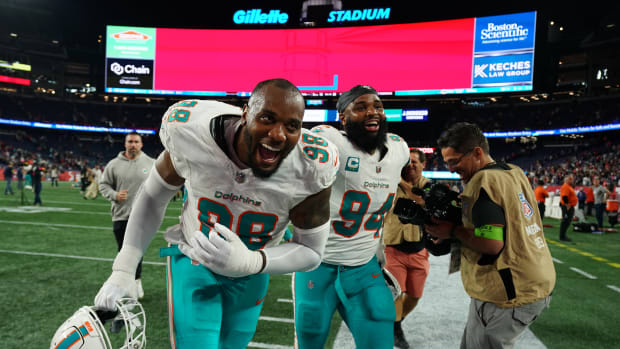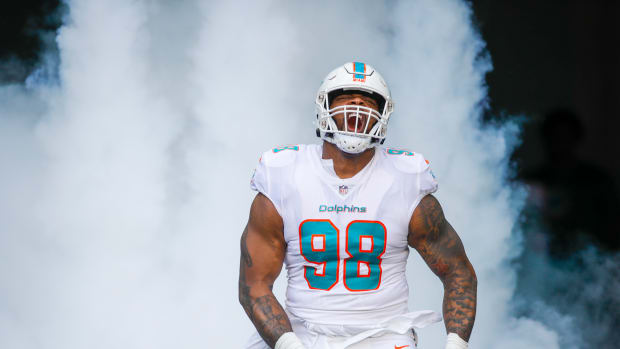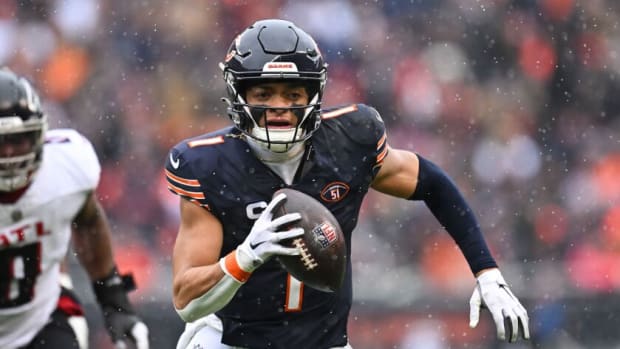Indianapolis Colts' Tight End Needs Could be Met by Cole Kmet
INDIANAPOLIS — Although the Indianapolis Colts gave tight end Jack Doyle an extension near the end of 2019, the free-agent departure of Eric Ebron means the team needs to address the position.
Mo Alie-Cox received a one-year tender and the Colts see tremendous potential in the former college basketball player. But don’t be surprised if general manager Chris Ballard uses an early draft pick on a tight end.
The Colts have always valued the position and, given the lack of depth at wide receiver, often utilized sets with two and even three tight ends.
Problem is, when scanning the list of prospects, this doesn’t appear to be a deep class for tight ends.
SI.com writer Kevin Hanson agrees with most draft analysts in his ranking of tight end prospects that Notre Dame’s Cole Kmet is the No. 1 choice at the position. There’s a lot to like about 6-6, 262-pound prospect, who Hanson projected in his mock draft to go to the Colts in the second round at the 44th overall selection.
“Expected to return to school in 2020, the dual-sport athlete (with baseball) for Notre Dame had a change of heart,” Hanson wrote. “Now, Kmet has a shot to be the first tight end off the board. A safety valve for Ian Book as a junior, Kmet became more involved in the passing attack and finished with 43 catches for 515 yards and six touchdowns in 2019. Kmet has experience both in-line and detached with the frame to continue to add more mass. Despite weighing in as the heaviest tight end at the combine, Kmet had the fourth-fastest 40-yard dash (4.70), best vertical jump (37") and second-best broad jump (10'3") at the position.
After Kmet, though, there seems to be a distinct drop-off in potential.
Hanson’s second prospect is Dayton’s Adam Trautman, a former high school quarterback who dominated lesser-level competition. It’s a big leap to the NFL from who he played against in college.
Next is Purdue’s Brycen Hopkins, the son of longtime Tennessee Titans offensive tackle Brad Hopkins. While Hopkins finished his college career with some strong games, he conceded at February’s NFL Scouting Combine that one of his areas of improvement is eliminating drops that he deemed a matter of a lack of concentration.
Hopkins said at the combine he’s preparing for the NFL with mentoring from his father on blocking and from former wide receiver Derrick Mason on pass catching and route running.
Hanson lists Trautman and Hopkins going back-to-back in the third round at 93 and 94 to Tennessee and Green Bay, respectively.
Washington’s Hunter Bryant showed potential as a move tight end with excellent ball skills and run-after-the-catch ability. But he also ran a slow 4.74-second 40-yard dash at the combine.
This seems to be a common theme among the prospects after Kmet. Each has an upside, but there’s also a question mark about something else.
Florida Atlantic’s Harrison Bryant won the 2019 John Mackey Award bestowed upon the nation’s top tight end. He had 65 catches for 1,004 yards with seven TDs. So why isn’t he rated higher?
NFL.com analyst Lance Zierlein listed some of Bryant’s weaknesses as, “needs a little better knee bend to improve leverage, will get a little upright in his breaks, just average in making body adjustments to catch off-target throws, needs to eliminate some drift and tighten up route turns.”




